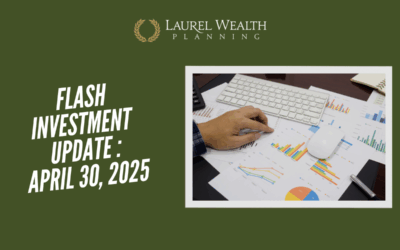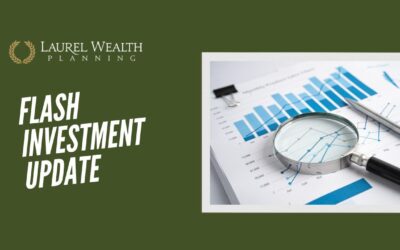September 26, 2022 — The Federal Reserve Board (the Fed) raised the fed funds rate on Wednesday, Sept. 21, an expected 0.75%. It then surprised the investment markets by projecting higher-than-expected future rate hikes. By year-end, the Fed expects an overall total interest rate of 4.4%, the highest in 20 years except for a brief period from 2005 to 2007.
The investment markets do not like surprises. From the 21st to the 27th, stocks fell 5% and bonds fell 2.5%, close to the June lows earlier this year.*
The Fed also projected that by the end of 2023, unemployment will increase from today’s 3.7% level to 4.4%. This likely means some hiring freezes and at least a mild recession.
Raymond James’ Chief Investment Officer, Larry Adams, explains, “The last two recessions — the Great Financial Crisis and COVID-19 — were severe but caused by ‘Black Swan’ events [unpredictable, rare events]. However, if we have a recession (75% probability of a mild recession and 20% of a severe recession in 2023), there are two reasons it is likely to be mild. First, there are no ‘excesses’ like a housing or dot.com bubble. Second, the current level of job openings (two per every person unemployed) will reduce the likelihood of significant layoffs. Given that total employment remains below pre-pandemic levels, hiring freezes are the more likely scenario. That is why our base case for the US economy includes a mild recession lasting from the first through the third quarter of next year.”
Investment Defense
In 2021, expecting interest rates to rise this year, as suitable, we positioned bonds defensively by overweighting shorter maturities and adding bond alternatives. We also underweighted international allocations. We are retaining these defensive measures for now as markets react.
Investment Offense
Market downturns, as unpleasant as they are, do not last forever.
Historically, the stock market has begun its rally approximately mid-way through the recession.
The average recession has caused stocks to post -34%, according to MarketWatch. With stocks currently at -22% year-to-date, we are two-thirds of the way there.
Our sense is that when traders see “light at the end of the inflation tunnel,” markets will ultimately turn up.
Bond yields are likely to be higher in 2023 and in the coming years. Many of our clients have bonds regularly maturing that will catch these higher rates.
As you know, we counsel to employ contrarian investing strategies, most especially purchasing what is on sale. Our next purchase is set at 3600 on the S&P 500 (to be executed if the target is hit at end of day because a lower price at close offers a greater probability of a downtrend and catching attractive values). This target is right above the next support level of 3585, and as of Sept. 26, was 1% away.
Assessing Your Risk/Reward Strategy
It’s always good to assess whether your risk/reward strategy suits you. If you wish to reduce risk a bit, you could increase the defensiveness of your portfolio at a modest cost by selling your shorter-term bonds and reinvesting in a federal money market fund, which would generally be stable and currently pays approximately 2%. Alternatively, low-cost tax-deferred fixed annuities are now paying 4%.
Sometimes, during volatile markets, having a chunk of money that is not moving around helps.
Please contact your financial advisor if you have any interest in these strategies or you would like to discuss the strength of your financial plan as markets cycle.
Breadth of Research with a Boutique Approach
As you rely on us to guide your financial plan through both the challenging and growthy parts of the investment cycle, we want to share that our goal is to bring you the research and strategies of a large firm along with a boutique approach.
A boutique approach allows us to know you and what is important to you.
Our affiliation with Raymond James, a large investment house, provides us a global footprint in serving you, with different departments offering us research in the many sectors of the investment markets.
In addition, driven by our continuing commitment to quality advice, we invest in extensive outside research. Our Investment Committee includes our Wealth Managers plus key outside consultants and brings you over 100 combined years of experience in developing strategies for you.
We (Laura and Anne) bring over 50 years of combined experience, having navigated both exuberant and difficult markets with our clients for the past 25 years, including the terrible downturn of 9/11 when the New York stock exchange was closed for four days; the Great Recession of 2007 to 2009, when a multinational bank failed and it seemed others might follow; the pandemic downturn; and now this post-pandemic tightening.
Our Investment Committee meets monthly and more often when conditions change. For example, we called a special meeting Friday, Sept. 23, to re-assess our purchase targets and tools.
We know that weathering difficult markets is no easy thing. The most essential element in investing is to use the tools wisely. This means fitting them to your financial plan and your preferences. Please contact us with questions, thoughts, or concerns.
* Source: Finance.yahoo.com. Stocks represented by S&P 500, and bonds by Bloomberg Aggregate Bond index.
S&P 500 Composite: Representing approximately 80% of the investable U.S. equity market, the S&P 500 measures changes in stock market conditions based on the average performance of 500 widely held common stocks. It is a market-weighted index calculated on a total return basis with dividend reinvested.
Bloomberg U.S. Aggregate Bond Market Index: A representation of SEC-registered, taxable, and dollar denominated securities. The index covers the U.S. investment grade fixed rate bond market, with index components for asset-backed securities, government and corporate securities, and mortgage pass-through securities. Must be rated investment grade (Baa3/BBB- or higher) by at least two of the following rating agencies: Moody’s, S&P, Fitch; regardless of call features have at least one year to final maturity and have an outstanding par value amount of at least $250 million.

Laura, the founder of LWP, is a Senior Wealth Manager, Chief Investment Officer and Shareholder. She has a master’s degree in tax and is an excellent listener. While she is a sophisticated financial planner with experience in complex issues, her priority is ensuring a financial plan works for people.



